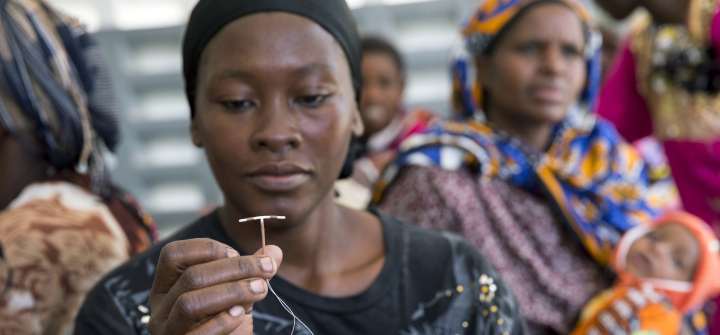Pandemic, Disasters Can’t Suppress Family Planning Demand, a Decade of Data Reveals
PATTAYA, THAILAND—Despite disruptions that threatened to derail momentum, demand for modern contraception has soared since 2012—87 million more women and girls using a modern method of family planning, according to FP2030’s 2022 Measurement Report released today during the International Conference Family Planning.
A clear message emerges in the pages of data: Women and girls want control of their lives, Samukeliso Dube, MD, MPH, MBA, executive director of FP2030, told reporters at a press briefing during the conference today.
“We’re at pivotal moment in history—and the world needs to step up to ensure that we can meet this ever-growing demand,” Dube said. “None of this should be controversial. But often it is—because at a fundamental level access to family planning is about shifting power; it’s about expanding the ability and freedom of individuals to make sure they have choice and agency in their own lives.”
In all, 371 million women and girls are now using modern contraception across the world’s 82 poorest countries, per the report.
Additionally, as result of modern contraceptive use from July 2021 to July 2022:
- 141 million unintended pregnancies were averted
- 29 million unsafe abortions were averted
- 148,000 maternal deaths were averted
“We’re in an interesting moment where we expected all of these impacts from COVID-19—but the data suggest that over the last decade, no matter what the disruption—whether it’s economic downturns, Ebola, Zika, natural disasters civil conflicts, or the pandemic—we see a steady trend and increase in contraception use,” Jason Bremner, PhD, MPH, senior director of Data & Measurement for FP2030, told GHN in an interview on the conference sidelines.
For example, Bremner notes, during West Africa’s Ebola outbreak, Sierra Leone saw a brief downturn in contraceptive prevalence—but the bounce back was quick. And data from last year showed that during COVID-19, more women adopted than discontinued contraceptive use.
This year’s report takes a deep dive into 15 sub-Saharan African countries where the demand for family planning has witnessed the sharpest increase: Ethiopia, Madagascar, Mozambique, Rwanda, Tanzania, and Uganda in East and Southern Africa, as well as Benin, Burkina Faso, Guinea, Mali, Mauritania, Niger, Nigeria, Senegal, and Togo in West Africa. The countries share a number of priorities highlighted by the researchers:
- Improving service delivery for young people
- Increasing domestic financing
- Scaling up postpartum family planning
- Strengthening supply chains
Surprising trends emerged in the mix of contraceptive methods at play, Bremner noted. In 2017, across the 82 countries studied, implants were the most common method in just 1 country—Burkina Faso. Today, they are the most common in 10 countries, and the second most common method in 14; their popularity may reflect awareness that long-acting methods provide a buffer during periods of disruption.
The report also tracks family planning financing and commitments, and it appears that the COVID-19 pandemic did not seem to affect bilateral donors so far. However, just 10 donor governments account for the majority of family planning funding—and for the last 2 years it has largely stagnated, at $1.39 billion in 2021 (at its peak, in 2019, donor government funding for family planning totaled $1.5 billion).
- Australia, Denmark, Germany, Norway, and Sweden increased their payments
- Canada and the US remained flat
- The Netherlands and the UK declined to provide additional funding
There are, however, still some unknowns on the funding front—including how the war in Ukraine and related inflation and energy prices could still affect European donors.
“Our work is not done … as the number of women of reproductive age grows and the number wanting contraception grows—yet financing from donors is flat and not meeting that need,” Bremner noted at today’s press briefing. To meet the need, advocates need to put pressure on donor governments to increase funding; countries need to up their own commitments; and the private sector needs to help by supporting lower pricing and increased choices of contraceptive methods across low and lower-middle income countries in particular.
Failing to fund family planning would be a missed opportunity, Dube said: “We must not only hold the line, but secure new lines of funding, and use the funding we have more efficiently.”
Dube also touched on why family planning is so critical to the achievement of so many other global development objectives, including the Sustainable Development Goals. “Ultimately we cannot talk about meeting any of the goals without family planning,” she said. “Family planning is the glue that brings all the SDGs together.”
The full Measurement Report will be published next month.
GHN's Dayna Kerecman Myers is on location in Pattaya City, Thailand, for the International Conference on Family Planning 2022. Follow all of GHN's coverage from the conference here.
Join the 50,000+ subscribers in 170+ countries who rely on Global Health NOW summaries and exclusive articles for the latest public health news. Sign up for our free weekday newsletter, and please share the link with friends and colleagues.
A woman holds up a contraceptive implant during Marie Stopes mobile clinical outreach team visit to a hospital in Rabai, Kenya. June 16, 2014. Jonathan Torgovnik for The Hewlett Foundation via Getty





